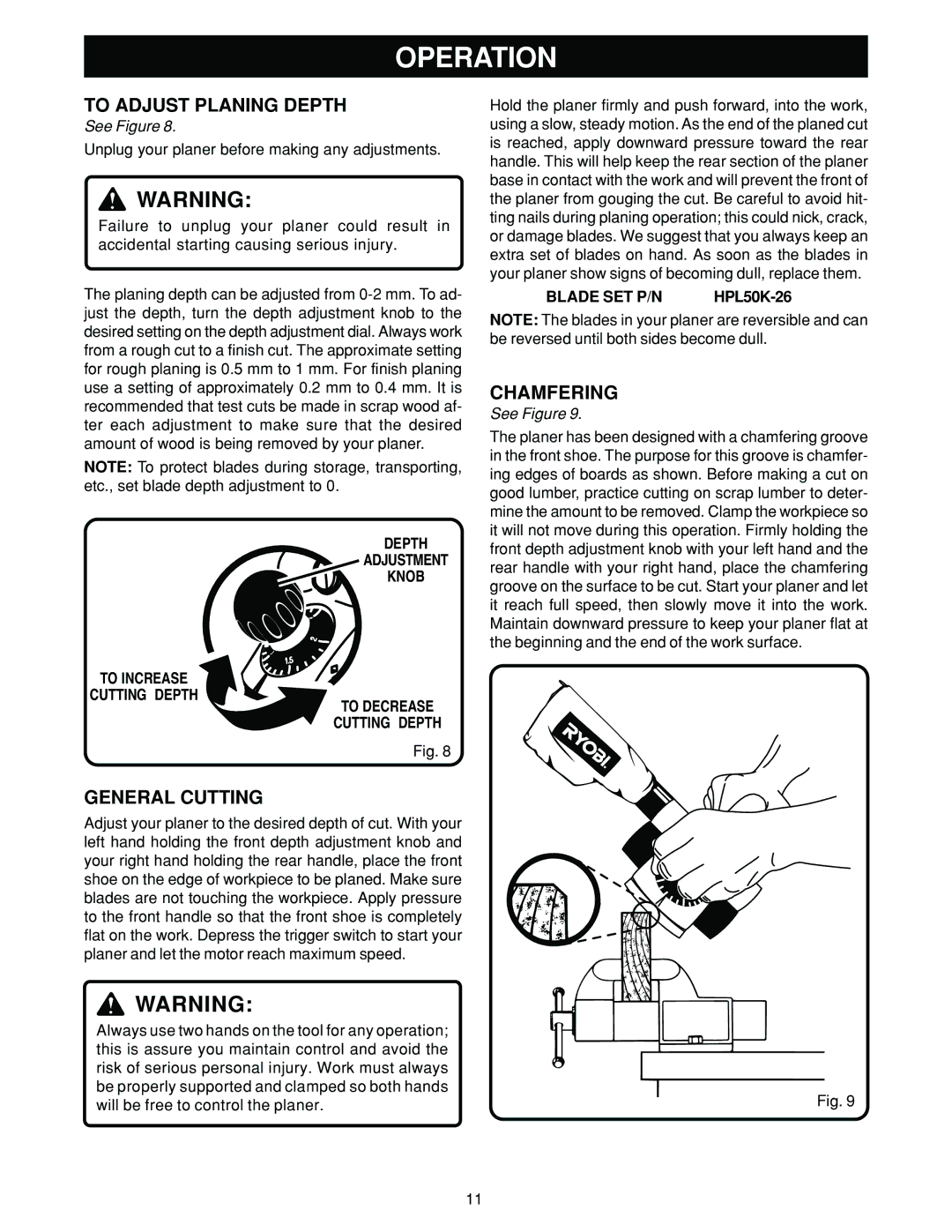
OPERATION
TO ADJUST PLANING DEPTH
See Figure 8.
Unplug your planer before making any adjustments.
![]() WARNING:
WARNING:
Failure to unplug your planer could result in accidental starting causing serious injury.
The planing depth can be adjusted from
NOTE: To protect blades during storage, transporting, etc., set blade depth adjustment to 0.
DEPTH
ADJUSTMENT
KNOB
TO INCREASE
CUTTING DEPTH
TO DECREASE
CUTTING DEPTH
Fig. 8
GENERAL CUTTING
Adjust your planer to the desired depth of cut. With your left hand holding the front depth adjustment knob and your right hand holding the rear handle, place the front shoe on the edge of workpiece to be planed. Make sure blades are not touching the workpiece. Apply pressure to the front handle so that the front shoe is completely flat on the work. Depress the trigger switch to start your planer and let the motor reach maximum speed.
![]() WARNING:
WARNING:
Always use two hands on the tool for any operation; this is assure you maintain control and avoid the risk of serious personal injury. Work must always be properly supported and clamped so both hands will be free to control the planer.
Hold the planer firmly and push forward, into the work, using a slow, steady motion. As the end of the planed cut is reached, apply downward pressure toward the rear handle. This will help keep the rear section of the planer base in contact with the work and will prevent the front of the planer from gouging the cut. Be careful to avoid hit- ting nails during planing operation; this could nick, crack, or damage blades. We suggest that you always keep an extra set of blades on hand. As soon as the blades in your planer show signs of becoming dull, replace them.
BLADE SET P/N |
NOTE: The blades in your planer are reversible and can be reversed until both sides become dull.
CHAMFERING
See Figure 9.
The planer has been designed with a chamfering groove in the front shoe. The purpose for this groove is chamfer- ing edges of boards as shown. Before making a cut on good lumber, practice cutting on scrap lumber to deter- mine the amount to be removed. Clamp the workpiece so it will not move during this operation. Firmly holding the front depth adjustment knob with your left hand and the rear handle with your right hand, place the chamfering groove on the surface to be cut. Start your planer and let it reach full speed, then slowly move it into the work. Maintain downward pressure to keep your planer flat at the beginning and the end of the work surface.
Fig. 9
11
